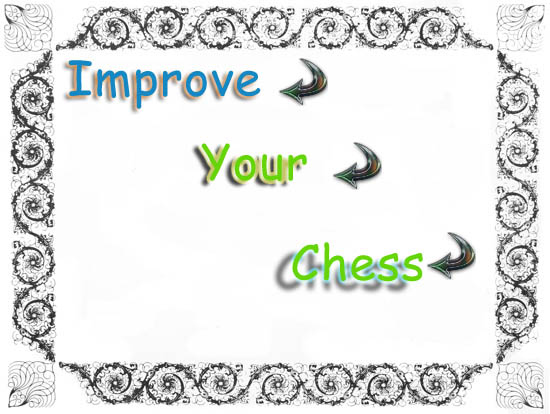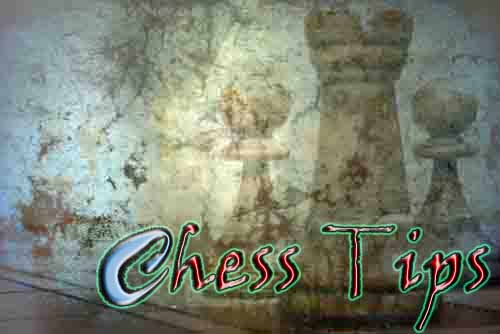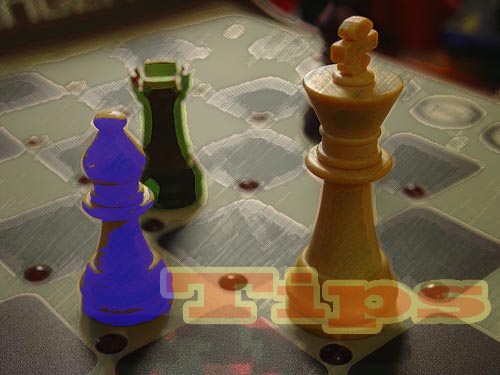
How to improve your chess
Chess is considered by many to be one of the ultimate tests of intelligence and skill. It takes clever planning and a large amount of strategy to do well in this game. One not only needs to have a thorough understanding of the pieces and how they work, but they have to be familiar and comfortable enough in the game to relax enough to think through all of their potential moves. Understanding the opponent is another huge factor into how a chess game will run. Knowing your opponent’s skill level as well as the types of moves they favor and are likely to make will go a long way in playing a strong chess game. No doubt, it is a game of superior intelligence. The alertness of the mind, capacity to contemplate on and select the right future is some basic requirements of this brainy game. Of course, you cannot cultivate talent only with the help of your labor but if you have a little of it you can surely bone it. Do not forget the age-old maxim that genius is five percents inspiration and ninety-nine percents perspiration. Moreover, hardly any human being is totally devoid of the element of talent. Only when we fail to perspire for making it develop that we lag behind the others who do. This is what we purpose to do with this article.
There are times when in the absence of the right kind of guidance our talents wither. Since they don’t know how to properly irrigate and fertilize this plant of talent, this gets withered away. Remember that like any other discipline, chess also needs your unrelinquish devotion. The young boys normally don’t know how to utilize their free time, especially those who have the potentials. Follow the guidelines given ahead and become a good chess player.
1. Read Chess-books and Magazines
After playing some games, read the book carefully. Play more games and the read the book. Each time you absorb some points that seemed previously obscure or did not grip you.
The way you improve most is not by playing opponents, but by playing over well-annotated games. Cover one side’s move usually the winner’s) and think out of each move before looking.
If you are eager to improve your play rapidly, write down the moves of all your games, not only the competitive one (in which recording is compulsory). It is best to write them in chess scorebooks, as loose score-sheets are easily lost. Afterwards, play each game and jot down critical comments. This how the grandmaster developed his skill in chess and became proficient in a short time without any coaching. It is surprising how much the game became clearer when you see every position a second time, in the light of what happened first time. You become your own tutor. If, after writing your comments you submit some of your games and your comments to a competent coach or top player for assessment for a suitable fee will improve more rapidly still.
Reading chess books by standard authors will also help. Try to follow the notations in a particular style. In case you get hold of those old books in which the notations are not in algebraic form, try to convert it in that form. Even this conversion exercise would give you a good peep inside the intricacies of the game. Write them down in a separate exercise book and the same way you do to develop you ability, say in Mathematics. This is very enlightening exercise. Just keep a small chess board with pieces alongside and convert descriptive notations into Algebraic notations. It is necessary because the algebraic notation was devised only a couple years ago while the earlier chess-books where only written in descriptive style. Remember that it is not a time consuming and boring exercise but a very rewarding one.
Besides doing this read some good magazines or newspapers having chess columns. Nowadays there is hardly any good journal or newspaper not having chess columns. Read those problems and solve them. Your intention while solving them should be to prove the given solution to be wrong! The idea is that you should independently try to attack the problem. In the process if you happen to hit some different solution deem it that you are on the right path of progress in your chess studies. You may join a club having the facility of chess. You might develop you chess skill in the company of the other learners.
Of course, you can enjoy chess without worrying about improvements. However, this is a natural tendency of an awakened mind to improve one’s performance in any sphere. By following the methods recommended here, almost anybody can become a strong player in a fraction of time normally taken.
Doctor Emanuel Lasker (World Champion 1897-1921) considered that given a logical approach, a person of average talent would not need to give chess more than 200 hours to reach a stage where a master player who conceded him or her handicap would surely lose.
Lasker’s 200 hours was an underestimate, no doubt, but certain it is that most players could reach in months a standard that usually takes them years to attain.
Some newspapers publish regular chess columns in which composed chess problems are a feature. In a problem, an artificial position is setup and a solver is required to find a way to check mate in a specified number of moves, usually 2 or 3, no matter what replies the defender makes. In these, for the sake of uniformity, White always makes the first (key) move. In 2-move problems, only the key move is required. In 3-move problems, the second moves are required for correct solutions. As the composer’s purpose is to make the task difficult, the key move is usually on that would be unlikely to occur to a player in an actual game, and is never capture (except of a Pawn) and never a check.
2. Play Handicap Chess with Senior Players
The often given advice to play against stronger players has two distinct drawbacks. Firstly, it is discouraging if you invariably lose. Secondly, it is painful boring for the opponent if the different in skill is great. The strong player would be too polite to tell you this, but will find some excuse to stop playing. To fore stat this, ask the opponent to give you a handicap (give you odds in the chess parlance) e.g. to remove a Knight, a Rook, a Rook plus Knight, or even the Queen. Once the right odds found, both players can have exciting game. When removing a Knight or a Rook as a handicap, convention decrees that it shall be the one on the Queen’s wing.
Another kind of handicap is possible with the use of chess clocks. The expert can play with a very short time limit, his opponents at a much greater one. If the difference in skill is not too wide, this sort of handicap is better, as there is no alteration of the starting position. If the difference in skill is very great, it is a good idea to use both systems.
For single games, you cannot use a time handicap unless you have chess clocks. However, in simultaneous exhibitions, a time handicap operates automatically.
Here the expert opposes a large number of players seated in a circle or rectangle, each with a board and pieces in front of him or her. The expert steps from board to board, making a move at each one. Obviously, the expert can take only a fraction of time that opponents take, as the master may have to make 10,20,30,40 or more moves in the time that each opponent has for one move.
Simultaneous exhibitions have provided, from time immemorial, an excellent opportunity for a large number of players to oppose a master under conditions that give the amateurs some chance of bringing off a draw or even a win.
3. Have chess software
Playing chess against a well-programmed computer also helps in your developing chess-skill. It was inevitable in our age of electronics that chess would engage the attention of computer engineers. The real revolution in computer chess was brought about by the introduction of portable, relatively inexpensive microcomputers. These have been steadily improving and the latest models feature up to sixty-four levels of play, programmed openings and games, a voice announcing moves, and sensitized squares to eliminate the need for a keyboard. Most can play a reasonable game, while the more advanced models complete successfully in open tournaments.
As hinted before, microcomputers are most useful to players who have a problem in finding an opponent. Teaching level with programmed opening variations and suggested best moves are provided to help the students. For top players computers provide a convenient way of storing information on openings and end games. Most top players use personal computer for this purpose.
4. General Advice
You should start playing preferably with another beginner, as soon as you have learned the moves. Do not be discouraged if you are slow in remembering the rules. With a little practice, you will get accustomed to the moves of the pieces and will be able to start working things out without trying to remember how each one move and capture.
Chess is competitive and a desire to win is its strongest motivation. This is why you should play with another beginner whom you have a chance to defeating. It is better if you have an instructor who can supervise the game to make you sure that the rules are observed and to point out where you went wrong after the game.
Textbook dealing with all aspects of the game in one volume, vary in scope and price. Some chess manuals are written by champions, others by chess teachers – they all help the beginner to delve deeper into the mysteries of chess. Later the person wishing to improve skills further more can specialize by studying various aspects of the game and here there is a vast choice of aids.
Books dealing with openings range from comprehensive manuals in several large volumes, not recommended for beginners, to books designed to explain the reasons why the openings are played in a certain way.
The Middle game is dealt with by explaining the basic strategic principles and by giving examples of tactical combinations. There are many books dealing with this subject.
The end game is part of the game, which all aspiring players should study. Here again there is a choice of many books. Best for beginners are elementary books, which explain basic principles that are most likely to occur in practical way. For advanced players there are books, which deal with specific ending in depth. Finally, we come to collection of games of great players. We recommend the books with detailed comments, especially those designed for beginners.
The young learners are advice not to rely heavily on chess problems to acquire mastery in this game. These problems are as removed from as crossword puzzles are from literature. Surely, they bone one’s power of visualization of the moves. Play as many actual games as possible and solve chess problem to keep your mind alert in the chess-sense. Remember in chess (the actual game) the object of the game is to defeat the opponent, the means by which this end is achieve or the time is takes, being unimportant. In problems, however, the opponent represents by time. Mate must be effect with in the stipulated number of moves. Since the position given in the problems is frequently quixotic, most of the seasoned chess players dismiss then as situation unworthy of consideration. On the other hand, the polemists maintain that game involves too much laborious and profitless wood shifting, and that the artistry of fifty games can be compound into a single artificial position. Nevertheless, the best courses open for young learners to have the judicious mixture of the two.
Disclaimer: This blog post was submitted by one of our blog readers. If you would like to contribute please contact me.




